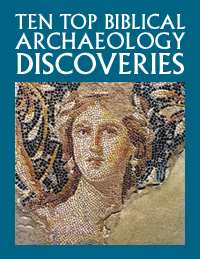
Print Engraving by Flemish artist Philips Gale (1537–1612). Built in 350 BCE, the Tomb of Mausolus (or the “Mausoleum”) at Halicarnassus was always counted among the list of the Seven Wonders of the Ancient World. Creative Commons CC0 1.0 Universal Public Domain Dedication.
Today, when we hear about the Seven Wonders of the World, our thoughts are immediately filled with visions of the likes of the Great Wall of China or the Pyramids of Giza. They definitely are wonders that have made an impression on people for centuries. There aren’t many living in the world today that wouldn’t immediately recognize any of the Seven Wonders, even if they might not know exactly where they are located. Many probably aren’t aware, however, that there is a difference between the New Seven Wonders of the World and the Seven Wonders of the Ancient World. For example, the Great Pyramids aren’t actually one of the new Seven Wonders, although they were given an honorary seat as the eighth wonder when an internet campaign named the new wonders in 2007.
The modern concept of the world’s Seven Wonders originated with the ones we now refer to as the “ancient” wonders of the world. Sometime before the first century BCE, the concept of the Seven Wonders of the World had been established as a list of awe inspiring “sights to see” for those traveling around the classical world, much like the Statue of Liberty or Mount Rushmore are for those traveling around the United States today.

The earliest known list of the wonders occurs in the writings of the Greek poet Antipater who lived at the end of the second century BCE. This list included the impressive walls of Babylon as well as its famed hanging gardens, the statue of Zeus at Olympia, the colossus of Rhodes, the pyramids of Giza, the tomb of Mausolus at Halicarnassus, and the temple of Artemis at Ephesus. Antipater’s contemporary, Diodorus Siculus, makes reference to the Seven Wonders of the World when discussing a particularly impressive obelisk constructed by Semiramis, the legendary Babylonian queen, which was apparently counted among them. Even in antiquity, it appears that the list of Seven Wonders was not set in stone. The Roman poet Martial, writing in 80 CE, penned a list that closely resembled Antipater’s but included the Flavian amphitheater (aka the Colosseum in Rome). Additional writings in the fourth and fifth centuries include the famous Pharos Lighthouse of Alexandria among the wonders, apparently having replaced the walls of Babylon on the list as a matter of personal preference.
Why these lists were often so fluid has to do with the ideologies of those who made them. For Martial, the addition of the Colosseum was a political statement. As Jennifer Tobin notes in the Winter 2023 issue of Biblical Archaeology Review, “Its builders, the Flavians, had recently come to power, so the poem was specifically designed to celebrate the new rulers as well as proclaim Rome’s cultural dominance.” For other ancient authors and explorers, it could simply have been about personal opinion.
Our website, blog and email newsletter are a crucial part of Biblical Archaeology Society's nonprofit educational mission
This costs substantial money and resources, but we don't charge a cent to you to cover any of those expenses.
If you'd like to help make it possible for us to continue Bible History Daily, BiblicalArchaeology.org, and our email newsletter please donate. Even $5 helps:

The world has become a much larger place since Greco-Roman writers first penned their lists of the Seven Wonders or “sights to see.” This is why the New 7 Wonders Foundation invited nominations from around the globe to form a new list of awe-inspiring monumental sights for tourists to seek out on their life’s journeys. The new list includes the Great Wall of China, the Taj Mahal, Machu Picchu, Chichen Itza, Petra, the Christ the Redeemer Statue in Brazil, and the Colosseum in Rome. Each of these would have left the likes of Antipater and Diodorus with a sense of wonder, just as they do for all who visit them today.
For more on the wonders of the ancient world, see “The Seven World Wonders” by Jennifer Tobin, published in the Winter 2023 issue of Biblical Archaeology Review.
Related reading in Bible History Daily:
Was Qasr al-Abd Modeled After the Mausoleum at Halicarnassus?
The post The Seven Wonders of the Ancient World appeared first on Biblical Archaeology Society.

0 Commentaires